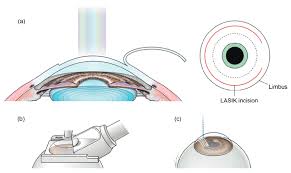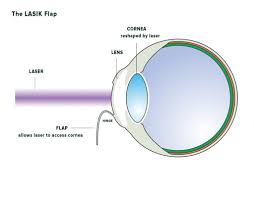Table of Contents
ToggleWhat is the 3D Eye-vatar and How is it Used in Treatment Planning?
In the rapidly advancing world of ophthalmology, the introduction of the WaveLight Plus InnovEyes system represents a significant leap forward in laser vision correction technology.
Central to this innovation is the concept of the “3D Eye-vatar,” a sophisticated digital model that enhances treatment planning and precision in laser procedures.
This blog will delve into what the 3D Eye-vatar is, how it is created, and its vital role in the treatment planning process for WaveLight Plus InnovEyes.

Understanding the 3D Eye-vatar
The 3D Eye-vatar is an advanced, personalized digital representation of a patient’s eye, meticulously crafted using cutting-edge imaging technologies. This model serves as a virtual blueprint for eye surgeons, enabling them to visualize and analyze the unique characteristics of each patient’s eye in great detail.

How the Eye-vatar is Created?
The process of creating the Eye-vatar begins with the collection of extensive data about the patient’s eye using a device known as the SIGHTMAP. This all-in-one diagnostic tool integrates several advanced imaging technologies, including:
- Scheimpflug Corneal Tomography: This technique provides detailed images of the cornea’s structure, allowing for precise mapping of its curvature and topography.
- Hartmann-Shack Wavefront Aberrometry: This method measures how light waves travel through the eye, identifying higher-order aberrations that standard tests might miss.
- Interferometric Biometry: This technology captures essential biometric data, such as corneal thickness, anterior chamber depth, lens thickness, and axial length.
By directing thousands of beams of light onto the eye and capturing the reflected data with exceptional precision, the SIGHTMAP device constructs a highly accurate 3D model. This model, or Eye-vatar, becomes the foundation for creating a customized treatment plan tailored to the unique anatomy of each patient’s eye.
The Role of the 3D Eye-vatar in Treatment Planning
Once the Eye-vatar is established, it plays a pivotal role in the treatment planning process for WaveLight Plus InnovEyes. The AI-driven system uses this detailed model to simulate how light interacts with the various structures of the eye, allowing for precise treatment customization.
Virtual Treatment Simulation
Surgeons can utilize the Eye-vatar to conduct virtual treatments before performing any actual procedures. This capability allows them to test different laser ablation patterns and determine the most effective approach for correcting higher-order aberrations. The simulation process provides insights into how alterations to the cornea will influence vision, significantly improving the chances of achieving optimal outcomes.
Iterative Adjustment Process
The WaveLight Plus system employs an iterative adjustment process, comparing modelled wavefront data with the measured wavefront of the actual eye. This involves assessing how light travels through the eye, identifying discrepancies between the modelled and measured data, and making necessary adjustments.
The iterative nature of this process allows the system to refine the treatment plan until it accurately represents the patient’s unique optical characteristics. In practical terms, this means that the Eye-vatar helps ensure that the final treatment is not just effective, but tailored to the individual, enhancing the likelihood of excellent visual results.
Precision Beyond Conventional Methods
Traditional LASIK procedures have been highly effective in correcting a range of refractive errors. However, they often fall short when it comes to addressing complex visual aberrations. The Eye-vatar technology goes beyond these limitations by providing a detailed and nuanced understanding of the eye’s anatomy and how it functions.
With WaveLight Plus InnovEyes, surgeons can create highly customized ablation profiles that correct not just basic refractive errors, but also subtle irregularities in the eye that can affect visual acuity. This personalized approach leads to better overall vision quality, reducing issues like glare and halos that are common with conventional LASIK treatments.
Benefits of Using the 3D Eye-vatar
The incorporation of the 3D Eye-vatar into treatment planning offers numerous benefits for both patients and surgeons.
Enhanced Accuracy and Customization
By using a digital model that accurately represents the patient’s unique eye structure, WaveLight Plus InnovEyes can provide a treatment plan that is precisely tailored to individual needs. This level of customization is crucial for achieving the best possible visual outcomes.
Reduced Human Error
Automating measurements and calculations through the Eye-vatar significantly minimizes the potential for human error in the treatment process. Traditional methods often involve manual input, which can lead to inaccuracies. With the Eye-vatar, the entire process is streamlined, allowing for quicker and more reliable treatment planning.
Improved Visual Outcomes
Clinical data from the WaveLight Plus system indicate that patients often achieve visual acuity better than the standard 20/20. With the ability to correct higher-order aberrations, many patients experience sharper, clearer vision, with some even reaching what is referred to as “super vision.”
Future-Proofing Vision Correction
The Eye-vatar also helps anticipate and accommodate potential changes in a patient’s eye over time. By factoring in the likelihood of age-related changes, the treatment can be designed to maintain optimal vision for years to come.
Key Takeaways
The 3D Eye-vatar represents a transformative development in laser vision correction, offering a high degree of personalization and precision that traditional methods cannot match. By leveraging advanced imaging technologies and AI-driven analysis, WaveLight Plus InnovEyes creates a comprehensive and detailed digital model of each patient’s eye.
This innovative approach not only enhances the accuracy of treatment plans but also significantly improves visual outcomes for patients. As technology continues to evolve, the integration of the Eye-vatar into refractive surgery will likely set new benchmarks for precision and effectiveness, paving the way for a future where laser vision correction is both highly individualized and remarkably successful.













